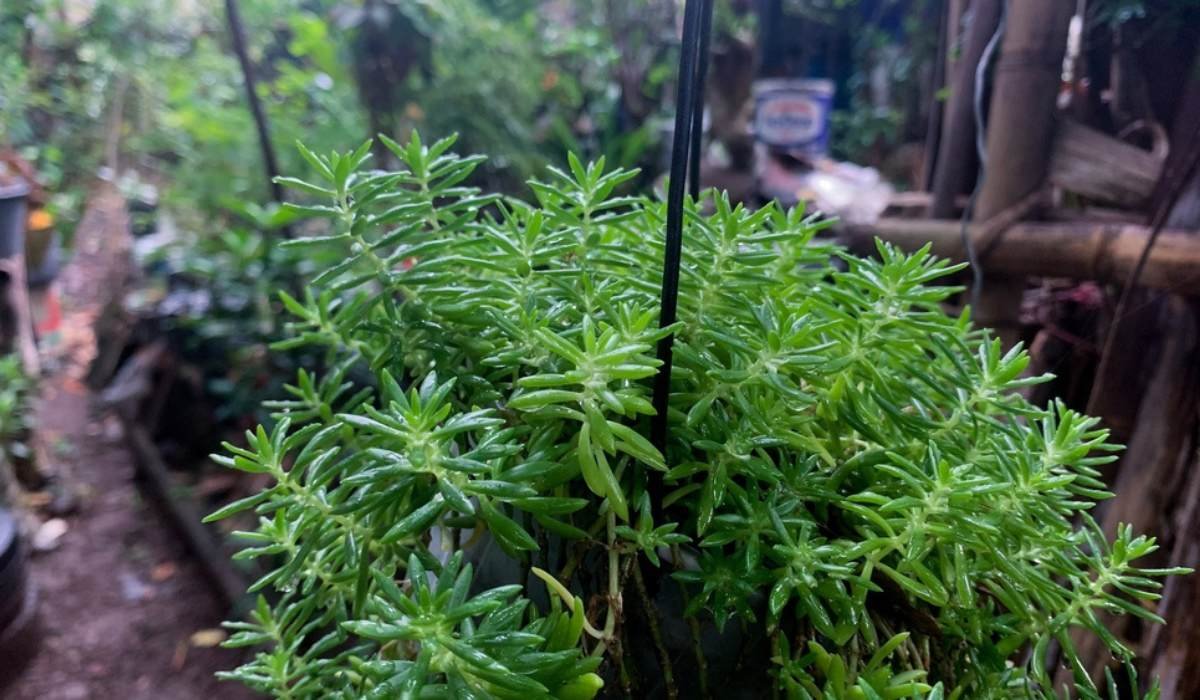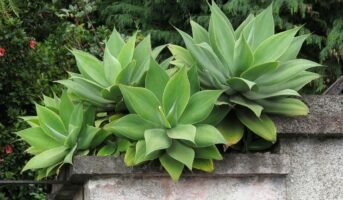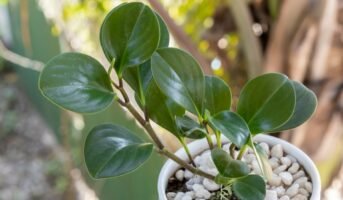Sedum Lineare is an evergreen plant that has dense, succulent, green leaves and bunches of star-shaped blooms from the middle of summer to the end of the growing season. It is commonly known as Carpet Sedum. It requires little attention and is quite popular with pollinators. This guide will teach you all you need to know about the cultivation and maintenance of Sedum lineare.
See also: What is Hibiscus and how to grow it in your home?
Sedum Lineare: Key facts
| Common Name: Carpet sedum |
| Type: Herbaceous perennial |
| Family: Crassulaceae |
| Native Range: Southeastern China, Japan |
| Height: 0.25 to 0.50 feet |
| Spread: 0.50 to 1.00 feet |
| Bloom Time: June to July |
| Sun: Full sun |
| Maintenance: Low |
| Suggested Use: Ground Cover |
| Flower: Showy |
| Soil type: Drought, Dry Soil, Shallow-Rocky Soil |
Sedum Lineare types
Carpet Sedum
Stone crop
Variegated Carpet
Sedum Variegated
Sedum Variegated Stonecrop
Sedum Lineare: Propagation
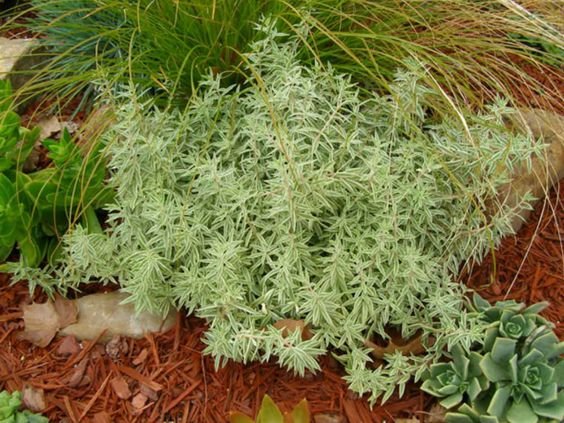
Source: Pinterest
Stem cuttings may be used to grow Sedum lineare, which is a simple method with a fair probability of success.
- Remove a 4-inch to 6-inch segment of the healthy stem using clean, precise pruners or a blade. Do away with the lower leaves.
- Plant the clipping in a soilless potting medium-filled 4-inch container. Give it plenty of water and make sure it stays uniformly saturated.
- Rooting is complete when new growth appears after a few weeks. Another option is to give the plant a little tug. In the presence of resistance, you may be sure that roots have taken hold.
In order to create more Sedum lineare plants, you may also split existing ones. The spring, when the growing season begins, is the time of year when this should be done most effectively.
- It is simpler to remove the whole clump from the ground, roots and all, if it is thoroughly hydrated beforehand, especially if the clump appears huge.
- The cluster should be dug out entirely with a garden shovel and then dismantled with a trowel or pruners.
- Plant the cuttings to the same extent as the parent plant in their new location. When watering, keep the soil consistently wet until you notice new growth.
The majority of Sedum varieties that are suitable for home gardens are cultivars, which means that their seeds will not produce plants that are genetically identical to the parent. Therefore, it is not suggested that Sedum lineare seeds be used for the purpose of multiplication.
See also: Jasmine and its benefits
How to maintain Sedum Lineare?
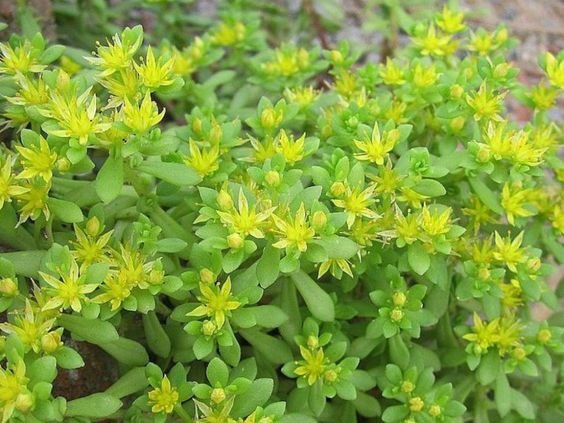
Source: Pinterest
-
Light
Full daylight, or at least 6 hours of sunshine for most of the day, is ideal for the growth of Sedum lineare.
-
Soil
Sedum lineare thrives on well-drained, loose soil that is either loamy, granular, or gravelly. Root rot is a common problem for Sedums that develop when the soil holds on to excessive water, which is frequently the problem with heavy, wet clay soils.
-
Water
To keep the soil from running dry, water fresh Sedum lineare plants about once a week. Aside from extended periods without precipitation or very high temperatures, Sedum lineare plants seldom need further watering after they’ve been entrenched. The plants are drought-tolerant because of their thick succulent leaves.
-
Temperature and Humidity
Temperatures exceeding 90 degrees Fahrenheit may burn the leaves of these plants, although, in general, they can withstand a broad range. The majority of Sedum plants may also thrive in damp environments. While good soil drainage is always recommended, it is paramount in humid climates to keep plants from drowning.
-
Fertiliser
Usually, Sedum lineare doesn’t need extra fertiliser and grows well in nutrient-poor soil. In fact, vibrant soil might lead to stunted development. Even if your soil is really poor, adding compost is a way to improve conditions for your Sedum plants.
Sedum Lineare: Potting and repotting
Sedum lineare is a great candidate for pot cultivation as its roots are shallow. However, you must ensure that the containers have sufficient drainage and that the potting mix you use is either a succulent potting mix or a well-draining potting mix.
When to repot your Sedum lineare plants is determined by how quickly they grow. When the Sedum lineare gets root-bound or roots begin to emerge from the drainage holes, it is recommended to repot the plant.
Sedum lineare performs well even in extreme cold and does not require any special care or shelter. Sedum lineare plants cultivated in containers, where the soil is just a few inches deep, are an exception to this rule. Protect the containers from freezing temperatures by wrapping them in canvas and bubble wrap or storing them in a bunker.
What are the uses and benefits of Sedum Lineare?
- Although Sedum lineare has a small amount of toxicity, it can be used to reduce inflammation, alleviate pain, and cleanse toxins from the body
- Sedum lineare is used for top-dressing, meaning it takes the place of an insulating layer and a waterproof barrier.
Ornamental
Sedum lineare requires very little attention, since it is drought-resistant, heat-resistant, and can flourish in areas where other species may struggle to thrive. It is possible to cultivate it as a ground covering, or in swinging arrangements, and it is an excellent choice for rock gardens, where it may be used to fill up empty places. In addition to this, it has blossoms that are fashioned like stars, which provide an interesting decorative element.
FAQs
Why is Sedum lineare a good houseplant?
Sedum lineare is an evergreen succulent that requires little care, grows in full light, and may be planted in areas where other plants die.
Is it possible to grow Sedum lineare in the house?
The Sedum lineare is a prevalent houseplant that is gaining popularity rapidly. Sedum lineare can survive under the worst circumstances, even inside. The Sedum, with some additional attention, may flourish in the house. Full sun and mild temperatures are essential for the healthy growth of Sedum.
How quickly does Sedum lineare grow?
Climatic conditions, soil, moisture, and fertiliser all have a role in how big and how fast a plant grows. Fast-growing ground cover types, such as Sedum lineare, may spread up to 1
Is Sedum lineare suitable for pets?
There is not a single Sedum variety that is known to be harmful to domesticated animals.
Housing News Desk is the news desk of leading online real estate portal, Housing.com. Housing News Desk focuses on a variety of topics such as real estate laws, taxes, current news, property trends, home loans, rentals, décor, green homes, home improvement, etc. The main objective of the news desk, is to cover the real estate sector from the perspective of providing information that is useful to the end-user.
Facebook: https://www.facebook.com/housing.com/
Twitter: https://twitter.com/Housing
Email: [email protected]
